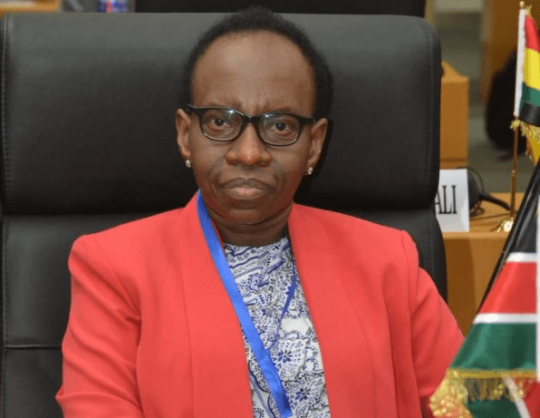
Public Primary Schools Grappling With Dilapidated Infrastructure and Facilities – Auditor
The infrastructure and facilities of public primary schools are deteriorating, according to a study by Auditor General Nancy Gathungu.
The report on expansion, improvement, and infrastructure development in public primary schools for the period ending in November 2021 revealed that the Ministry of Education had not given infrastructure development in educational institutions a high priority.
It was stated that the fiscal allotment for public elementary school expansion, development, and upkeep was insufficient.
In the ten years (2010-2011 to 2019-2020), just 2,265 or 10% of the approximately 22,000 public primary schools received funding from the School Infrastructure Improvement Grant, according to a study of ministry statistics.
According to the analysis, each school got an average of Sh648,543.
Additional assessment of school budget requests and conversations with school administrators found that this amount may not be sufficient to build a conventional classroom.
Infrastructure in schools consists of physical facilities and services, such as water and power, and education facilities.
According to the National Education Sector Strategic Plan 2013-2018, school infrastructure consists of classrooms, sanitary and environmental facilities, administration blocks, dormitories, laboratories, dining halls, libraries, workshops, and science rooms.
At the time of the audit, the Free Primary Education capitation for repair and maintenance was Sh106 per student each year, according to the report.
It was stated that the capitation is intended to cover the upkeep of all school buildings, including sanitary facilities, administrative offices, and furniture.
Gathungu added that the Basic Education Act of 2013 and the Basic Education Regulation of 2015 only stipulate the class size in terms of dimensions, the number of students per building, and the number of students who may use a toilet.
There are no suitable guidelines on the materials to be used and upkeep standards for school facilities.
This allows for any form of structure to be used as a classroom, restroom, or other facilities.
The audit revealed that distinct application and allocation procedures were utilized for school infrastructure enhancement grants.
While some schools wrote letters to the ministry directly, others submitted detailed project plans with accompanying bills of quantities.
According to the research, the Ministry of Education has not designed and implemented a viable long-term policy to expand, improve, and maintain elementary school infrastructure.
It was said that the ministry recognizes infrastructural deficiencies in overcrowded classrooms and degradation.
The report stated, “Interviews with ministry officials and school principals revealed that there was no systematic method for determining the needs of primary schools.”
Individual schools may send their infrastructure needs at any time of the year if invited to do so and if the condition is urgent.
Gathungu remarked that the National Government Constituency Development Fund and other donors had funded school infrastructure.
However, they can choose which schools to sponsor, which may not be the most deserving in the area.
ALSO READ:
The report recommends that the ministry conduct a complete assessment of primary schools so that the government can design a long-term infrastructure development plan.
“The ministry should develop a tool for identifying and reporting schools’ infrastructure. This will also help in targeting of resources to the most needy schools and strengthen monitoring and evaluation,” it added.
It also stated that the ministry should provide guidelines on infrastructure standards beyond classroom size and enrollment to encourage school boards to maintain these attributes.
The report added that the ministry should engage NG-CDF and well-wishers in an organized manner to assure funding for the schools with the greatest financial needs.
Public Primary Schools Grappling With Dilapidated Infrastructure and Facilities – Auditor


